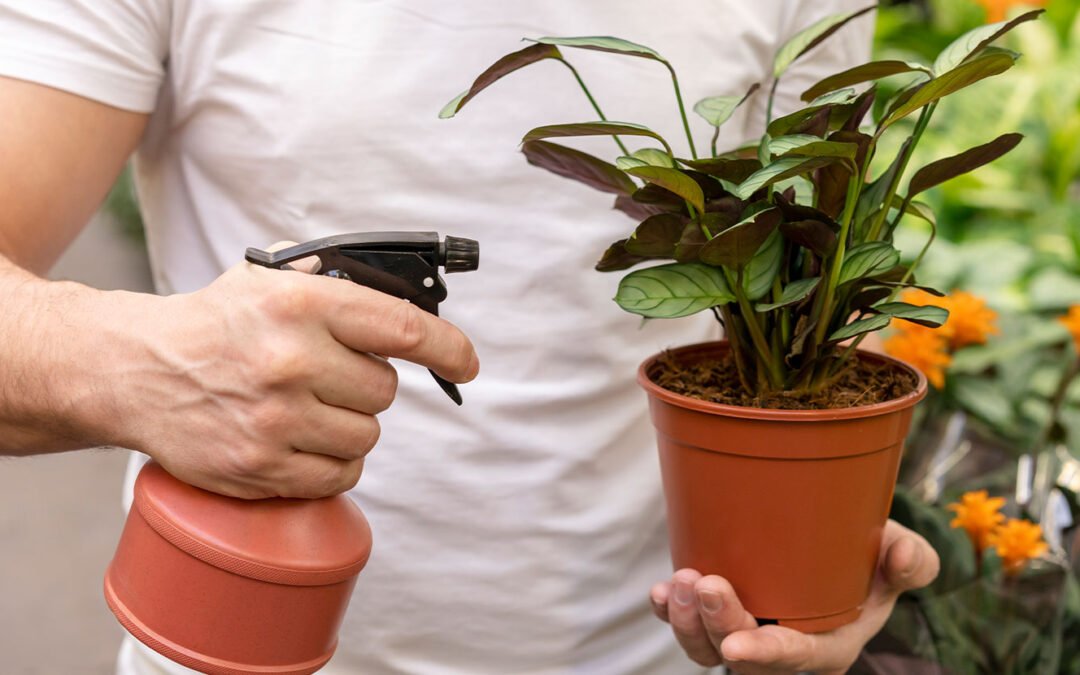Indoor plants bring beauty and freshness into our homes, but they are also susceptible to various pests. These tiny invaders can weaken plants, stunt their growth, and even kill them if left unchecked. The good news is that you don’t need to resort to harsh chemicals to protect your green companions.
By understanding the common indoor plant pests and using natural methods to control them, you can maintain a healthy indoor garden without compromising your home’s air quality. Whether you are exploring the Cheapest Way to Start Indoor Farming or learning How to Grow Vegetables at Home Without Soil, keeping your plants pest-free is essential for success. In this guide, we’ll explore the most frequent plant pests and effective organic ways to eliminate them.

Common Indoor Plant Pests and Natural Control Methods
1. Aphids
Identification
Aphids are small, pear-shaped insects that cluster on new growth and undersides of leaves. They come in various colors, including green, black, and white.
Signs of Infestation
- Sticky honeydew on leaves
- Yellowing and curling of foliage
- Stunted plant growth
Natural Control Methods
- Neem oil spray: A natural pesticide that disrupts aphid reproduction.
- Soapy water spray: Mix a few drops of liquid dish soap with water and spray on affected areas.
- Introduce ladybugs: Ladybugs feed on aphids and help keep their population under control.
- Rubbing alcohol: Dip a cotton swab in alcohol and dab on visible aphids.
2. Spider Mites
Identification
Spider mites are tiny, spider-like creatures that thrive in dry conditions. They are difficult to see but leave behind fine webbing on plants.
Signs of Infestation
- Yellow speckling on leaves
- Webbing around plant stems and undersides of leaves
- Leaf drop due to severe damage
Natural Control Methods
- Increase humidity: Misting plants regularly discourages spider mites.
- Essential oils: Rosemary and peppermint oil sprays deter mites.
- Beneficial insects: Predatory mites and lacewings feed on spider mites.
- Neem oil: Disrupts their life cycle and prevents further infestation.
3. Fungus Gnats

Identification
Fungus gnats are small, black flies that hover around soil surfaces. Their larvae feed on plant roots and organic matter.
Signs of Infestation
- Wilting or slow plant growth
- Tiny flies around the base of plants
- Yellowing leaves
Natural Control Methods
- Let soil dry out: Fungus gnats thrive in moist soil, so allow the top layer to dry between waterings.
- Diatomaceous earth: Sprinkle food-grade diatomaceous earth on the soil surface to kill larvae.
- Sticky traps: Yellow sticky traps attract and capture adult gnats.
- Hydrogen peroxide solution: Mix one part hydrogen peroxide with four parts water and drench the soil.
4. Mealybugs
Identification
Mealybugs are small, white, cotton-like pests that suck plant sap and weaken indoor plants.
Signs of Infestation
- White, waxy buildup on leaves and stems
- Leaf drop and stunted growth
- Honeydew secretion leading to sooty mold
Natural Control Methods
- Isopropyl alcohol: Wipe affected areas with a cotton swab dipped in rubbing alcohol.
- Neem oil spray: Effective in disrupting their feeding and reproduction.
- Garlic spray: A natural repellent that discourages mealybugs.
- Predatory insects: Lacewings and ladybugs help keep mealybug populations low.
5. Whiteflies

Identification
Whiteflies are small, white, winged insects that flutter around when plants are disturbed.
Signs of Infestation
- Yellowing and wilting of leaves
- Honeydew residue leading to sooty mold
- Visible white insects on leaf undersides
Natural Control Methods
- Neem oil: Disrupts their life cycle and deters further infestation.
- Sticky traps: Traps adult whiteflies before they lay eggs.
- Natural predators: Introduce parasitic wasps to control populations.
- Garlic and chili spray: A homemade deterrent to repel whiteflies.
Conclusion
Keeping your indoor plants free from pests naturally is possible with consistent care and the right organic solutions. Whether you’re setting up How to Set Up a Beautiful Balcony Garden or looking into Types of Indoor Farming, healthy plants require proactive pest management. By recognizing infestations early and taking immediate action, you can prevent serious damage to your plants while maintaining a healthy living environment.
Natural pest control methods such as neem oil, essential oils, beneficial insects, and homemade sprays provide effective alternatives to chemical pesticides. By integrating these strategies into your plant care routine, your indoor farming garden will thrive without harmful toxins.
Frequently Asked Questions (FAQ)
1. How can I prevent indoor plant pests naturally?
Keep plants healthy by ensuring proper watering, good air circulation, and regular inspections. Using neem oil or insecticidal soap as a preventive measure also helps.
2. What is the best natural remedy for aphids?
Neem oil and soapy water sprays are highly effective against aphids. Introducing ladybugs also helps reduce their population.
3. Why do my indoor plants keep getting fungus gnats?
Overwatering is the primary cause. Allow the topsoil to dry out and use sticky traps or diatomaceous earth to manage infestations.
4. How do I get rid of spider mites naturally?
Increase humidity, spray plants with essential oils, and introduce predatory mites to keep their population under control.
5. Are natural pest control methods safe for pets?
Yes, most natural remedies like neem oil, garlic spray, and sticky traps are safe for pets. However, always check for any plant-specific toxicity before applying treatments.
By following these natural pest control methods, you can ensure your indoor plants remain healthy and pest-free while avoiding harmful chemicals. Keep an eye on your plants, and act quickly at the first signs of trouble to enjoy a thriving indoor garden!

